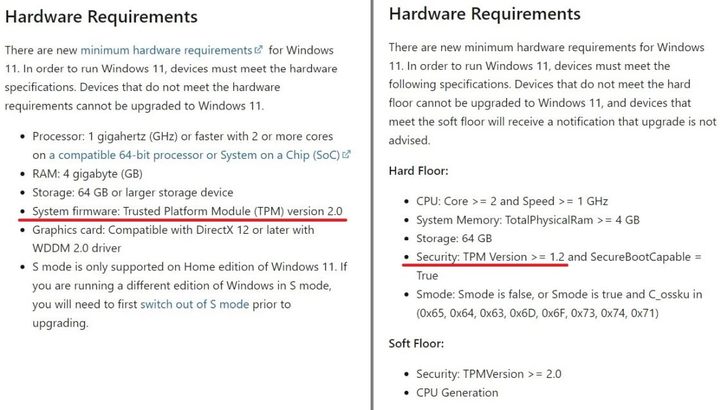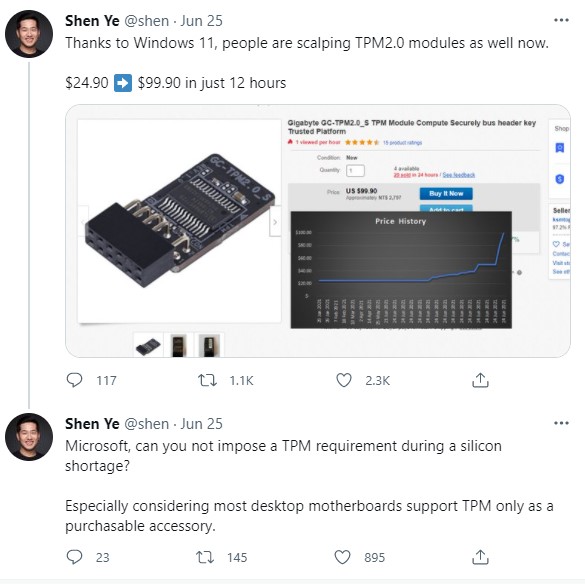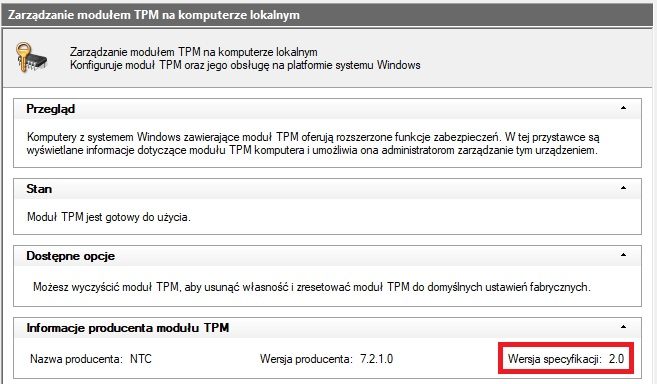TPM 2.0 Module Scalping Begins; Windows 11 to Blame
Microsoft has updated Windows 11's requirements on its website. It will be necessary to have a TPM 2.0 module. Scalpers immediately went on a buying spree, and prices are breaking records.
2

Windows 11's hardware requirements have caused quite a stir. First, Microsoft announced that the official support will apply only to newer processors (2nd-gen AMD Ryzen and 8th-gen Intel Core i3/i5/i7). Now the requirements website has changed. In order for Windows 11 to work properly it will be necessary to have a TPM 2.0 module. Scalpers started buying up components and prices shot up as soon as the information hit the web.

The problem was noticed by Shen Ye, head of HTC's hardware department, showing a huge price increase in the US in gus Twitter post. In just 12 hours, TPM 2.0 module prices have increased from $25 to $100. He accompanied the price change graph with a call for Microsoft to reconsider the change, especially in the face of a worldwide chip shortage.

Since the Anniversary Update to Windows 10, released in August 2016, all new Windows PCs must be equipped with a TPM 2.0 module, which will be automatically unlocked. However, this only applies to ready-made computers and laptops, not to those assembled by ourselves. In most cases motherboards only have an input for the TPM module, which needs to be purchased separately. Therefore, the problem will affect users who independently purchased components and assembled or commissioned the assembly of a computer and owners of a large part of the hardware bought in 2016 or earlier.
If we are not sure whether our hardware is equipped with a TPM module, we can check it in a simple and quick way (see box below). However, the matter gets complicated when the device does not have the module. If the method described in the box does not show TPM, it may... not be true. In some configurations the module may be locked at the BIOS level. This is good news because you won't need to buy an additional component, but you will need to unlock it.
How to check if there is a TPM 2.0 module in the computer?
To check if your computer is equipped with a TPM 2.0 module, you need to:
- Click Windows R (or go to the Start menu and enable the Run application),
- Type tpm.msc and press Enter,
- Check the version of the module in the opened window.

Scalpers have reasons to buy TPM 2.0 modules now. If the situation does not change, installing Windows 11 on a new computer may prove impossible without this component. So far it has not enjoyed too much popularity, so the stock in stores is probably not too big. Another incentive is the fact that the potential buyers will be gamers and computer enthusiasts who often build very expensive rigs and will be ready to buy the TPM 2.0 module even at an absurdly high price.
It is also unclear what the future of Boot Camp, which enabled Windows to run on Apple computers, will be. Although the hardware is equipped with the T2 security chip, it does not meet the technical requirements of Windows 11.
What is TPM 2.0 used for?
TPM (Trusted Platform Module) is a microchip designed to increase hardware security. It enables BitLocker functionality, offering advanced data encryption and preventing unauthorized access to the system.
Access to the drive and booting the system may require a PIN or a key on a USB stick, among other things. Additionally, BitLocker checks for potential security threats, detecting e.g. disk changes or BIOS tampering. The access key is stored inside the module and not on the disk where it would be easier to take over.
- Windows 11 - official homepage
- Windows 11 Presentation
- Windows 11 Won't Support Ryzen 1000 series and Intel CPUs Below 8th Gen
- Windows 11 Will Let Us Run Android Apps
- Windows 11 - Everything We Know About Microsoft's New System
- Microsoft Teams will now monitor who is actually working in the office. And the boss will be able to check it at any time
- „Let him sit in the middle of this stupid office.” Microsoft CEO wants everyone to work in open space, not remotely
- George R.R. Martin asked ChatGPT to write a sequel to Game of Thrones, then took the result to court
2

Author: Konrad Sarzynski
He has enjoyed writing since childhood and always dreamed of writing his own book. He just never expected it to be a scientific monograph. He has PhD in urban studies, which he is happy to brag about to his friends at every possible opportunity. He started his adventure with Webedia in late 2020 in the Tech department. He created texts, ran the technology newsroom, and later co-founded Futurebeat.pl, being responsible for featured articles and hardware tests. Now he focuses on all kinds of builders - both mainstream and indie - which he streams on his Twitch channel. He lives with his cat and wife.
Latest News
- Season 2 has just started, and Todd Howard is already writing the script for the third one. Fallout 5 will be changed by the TV show
- 5 games to grab on Amazon Prime Gaming. Among them, a collection of RPG classics
- My experience attending the 2025 Game Awards, and why I loved it
- Larian CEO Swen Vincke responds to generative AI backlash from fans
- “This guy copied my video WORD FOR WORD.” A YouTuber claims his video was fully duplicated

